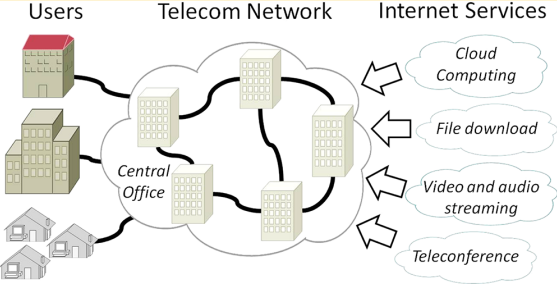Reducing Internet and telecom greenhouse gases
January 4, 2013

Telecommunications network services (credit: Chien A. Chan et al.)
The information communications and technology (ICT) industry, which delivers Internet, video, voice and other cloud services, produces more than 830 million tons of carbon dioxide (CO2) annually — about 2 percent of global CO2 emissions — the same proportion as the aviation industry produces. This is expected to double by 2020.
Now researchers from the Centre for Energy-Efficient Telecommunications (CEET) and Bell Labs are reporting new models of emissions and energy consumption that could help reduce this carbon footprint.
The team notes that controlling those emissions requires more accurate models that take into account the data traffic, energy use, and CO2 production in networks and other elements of the ICT industry.
They developed and tested two new models that better estimate the energy consumption and CO2 emissions of Internet and telecommunications services. Both models delivered better estimates than the current “top-down” models.
The researchers suggest, based on their models, that more efficient power usage of facilities, more efficient use of energy-efficient equipment, and use of renewable energy sources are three keys to reducing ICT emissions of CO2.